ELECTRIC, WITH AN EDGE
The distribution of electric power is the movement of electrical energy from generation to the point of use. The term may be used either for the whole process or one stage in this process, with other stages being transmission and distribution. Distribution has become more important as electricity’s role in society has increased.
Considerations for installing power grid components may include many items. For instance, a significant component to installing a power grid is the location of the installation.
If anyone wants to install a power grid, they need to ensure that an available power source is nearby.
You must determine the amount of voltage capacity required for the installation beforehand as well.
Submersible Distribution Transformers offer a solution for difficult installation considerations.
They can resist water and keep electrical and mechanical systems safe and dry.
When there is no access to the ground, these transformers are installed below the water level and provide a reliable power supply to your building or home.
Designed to provide power when installed in underground vaults, wells, and water-filled pits.
The design has been developed to address such difficult installation considerations as the need for a transformer that can withstand immersion in water and be installed in multiple locations.
The transformer is not visible on the top surface of the vault. A submersible vault protects the transformer.
The submersible transformer vault has a watertight seal and is suitable for use in areas where flooding may occur.
DAELIM is a world leader in transformer technology.
It has been supplying quality, innovative products for over a decade.
The company’s product range includes submersible distribution transformers, which are used in various worldwide applications.
A submersible distribution transformer is an electric transformer enclosed in a waterproof metal or plastic tube submerged in water.
This type of transformer is often used in rural areas, where the transformer station is located near a body of water.
Also, Submersible distribution transformers are typically used in communities due to their ability to be installed in a pond or other body of water.
They are used to provide electricity to an area that is not accessible by a power line.
Additionally, Submersible Distribution Transformers offer a solution for difficult installation considerations.
They can resist water and keep electrical and mechanical systems safe and dry.
When there is no access to the ground, these transformers are installed below the water level and provide a reliable power supply to your building or home.
Usually designed to provide power when installed in underground vaults, wells, and water-filled pits.
The design has been developed to address such difficult installation considerations as the need for a transformer that can withstand immersion in water and be installed in multiple locations.
Finally, using a Submersible Distribution Transformer is an effective way of protecting your distribution transformer from potential damage, such as flooding or ice accumulation.
A Submersible Distribution Transformer is an underground electrical device that is lowered into a hole in the ground and submerged in water, oil, or gas-filled pipe to protect it from high winds and other weather-related.
A submersible distribution transformer is an electrical device that is designed to provide reliable and efficient power distribution in underground or submerged environments. This type of transformer is specifically engineered to operate safely and effectively when submerged in water or other liquids. It is commonly used in applications such as underground vaults, subways, tunnels, mines, and other harsh environments where space is limited or above-ground installations are not feasible.
Submersible distribution transformers are similar to other types of transformers in their basic function, which is to transform electrical energy from one voltage level to another. They are typically designed to step down high voltage electricity from the utility grid to a lower voltage level that can be safely used by homes and businesses. The transformer is encased in a waterproof enclosure, which allows it to be submerged in water or other liquids without the risk of damage to its internal components.
These transformers come in a variety of sizes, depending on the amount of electrical power they are designed to handle. They are typically more compact and lightweight than their above-ground counterparts, which makes them ideal for use in locations where space is limited. Additionally, because they are submerged, they generate less noise and are less visible, making them ideal for use in areas where aesthetics are important.
Power Transformer and Distribution Transformer
A submersible transformer vault is an enclosure that houses a transformer and is designed to be submerged in water. These types of transformers are commonly used in underground utility vaults where space is limited or where protection from flooding is required. Submersible transformer vaults are typically made of materials such as concrete or steel, which are resistant to water and other corrosive elements.
The transformers used in these vaults are specially designed to withstand the added pressure of being submerged in water and are insulated to prevent electrical hazards. Additionally, submersible transformers are often equipped with features such as oil-level monitors and temperature sensors to ensure safe and reliable operation.
Single-phase distribution transformers are designed for smaller loads and operate on a single phase of the AC power.
Three-phase distribution transformers are designed for large loads and operate on three phases of AC power from the utility company.
Single-phase distribution transformers are typically used for residential or small commercial installations, while three-phase distribution transformers are often used in larger commercial establishments.
A single-phase submersible distribution transformer is a type of transformer designed for outdoor use.
It’s used for supplying power to remote areas with no utility power available.
The transformer is placed on the surface of the water, where it operates as a floating unit.
Its primary winding is wired to the shoreline, and the secondary winding is connected to the distribution system.
They are the most common type of electrical transformer.
These transformers are generally located in utility holes.
The transformer generally receives power from an overhead primary distribution line, and it is characterized by a low dry-weight design that is suitable for water immersion.
Single-Phase Submersible Distribution Transformers can provide electrical power to customers such as residential and commercial buildings, farms, and mines.
These transformers come in a variety of sizes and shapes.
It is safe for use in areas where the voltage may exceed 250 volts to ground.
Designed for use on solidly grounded 120/240 volt single-phase systems.
They provide a voltage transformation ratio of 120kV to 240 volts, or 240 volts to 120kV, or 120 volts to 240 volts.
Also, they are less expensive to purchase and mount than three-phase units, but they typically have a lower voltage rating.
If you need to transform voltage, you will need to use a transformer with a higher voltage rating.
Lastly, Single-phase, single-voltage distribution transformers are transformer devices that work with a single circuit, and they can be either on the ground or on the pole.
They are typically used in areas with no more than one electric meter and only one set of electrical wires.
Usually, they are used to step down voltage from a transmission line to a safe voltage for distribution.
Electrical power is the lifeline of modern society, and any interruption in the power supply can be catastrophic.
Three-phase submersible distribution transformers are specially designed to function underwater and can be submerged for some time without any damage.
Three-phase submersible distribution transformers are used to supply power to an electric system.
When used in the electric system, the coils of the transformer become energized by a voltage source.
The magnetic field created by the transformer’s coils induces a voltage to flow into the electric load.
Secondly, Three-phase submersible distribution transformers are designed for outdoor use in high humidity environments.
They can offer up to 18.4 kilovolt-amps (kVA) of power and handle voltages between 138 and 345 volts alternating current (VAC).
Its covers are made of steel plates which provide an excellent seal.
The process of distribution of electrical power requires the use of distribution transformers.
Distribution transformers are used to provide a lower voltage to individual buildings.
Note that Three-phase substation transformers are usually large and use a lot of power, with most having ratings of at least 25 MVA.
For this reason, they are often installed underground or in a vault with access only from above.
The transformer is then cooled by liquid (usually deionized or distilled water).
The location of the transformer is also very important because it needs to be both accessible and safe, which is why there are three-phase submersible distribution transformers in communities.
They are located underground or underwater, which makes them safer from any natural or artificial disasters.
Transformers are typically placed at the point of load.
It usually denotes the power used or consumed, such as a light bulb or a toaster.
They can also be placed at the service entrance of an electric utility, where power is first picked up from the electric grid and distributed to customers.
Transformers are essential components in electrical distribution systems. They are used to convert alternating current (AC) to direct current (DC).
It comprises three main components: the primary winding, the secondary winding, and the core.
The primary winding provides electricity at a high voltage level, then transferred to the secondary winding.
A transformer is a device that transfers energy from one circuit to another through electromagnetic induction.
It changes the voltage and current in one circuit to match the voltage and current in another circuit.
Transformers are used in power distribution systems to change voltages for different types of equipment and in electric power transmission systems.
Generally, transformers are not dangerous because they are designed to be able to withstand high voltage.
However, some things can cause the transformer to become overheated, causing it to explode, leading to a fire.
Transformers are not always found in an easily accessible location, so people who have them in their yard should keep them mowed for easy access.
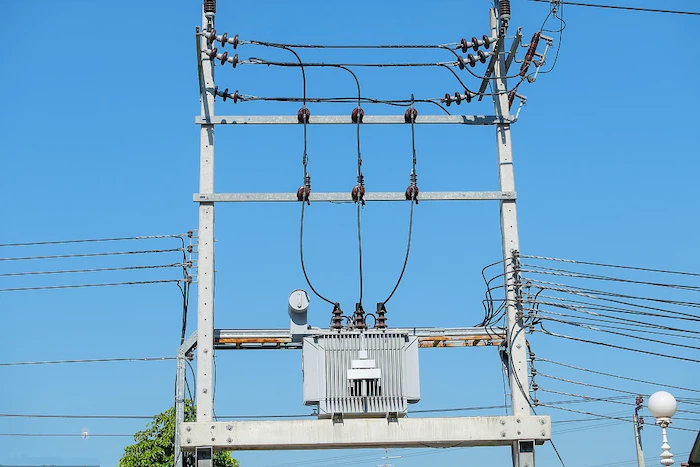
Submersible distribution transformers differ from other types of transformers in terms of their design and installation. Here are some of the key differences:
Design: Submersible distribution transformers are designed to be completely submerged in oil, whereas other types of transformers may use oil only for insulation or cooling purposes. This means that submersible transformers have a more robust design that is better suited to harsh environments, including exposure to moisture, dust, and other contaminants.
Installation: Submersible distribution transformers are typically installed underground in a transformer vault, which helps to protect them from external hazards and allows them to operate more efficiently. In contrast, other types of transformers may be installed on poles or mounted in pad-mounted enclosures above ground, which can make them more vulnerable to damage from weather, wildlife, and other factors.
Size and capacity: Submersible distribution transformers are available in a wide range of sizes and capacities, making them suitable for a variety of applications. Other types of transformers may be limited in terms of their size and capacity, which can make them less versatile.
Maintenance: Submersible distribution transformers require less maintenance compared to other types of transformers. The oil used in submersible transformers is a self-contained lubricant that helps to reduce friction and wear, while also serving as a cooling agent. This eliminates the need for routine oil changes and reduces the risk of leaks or spills.
Overall, the design and installation of submersible distribution transformers make them a reliable and efficient option for a variety of power distribution applications.
mini substation transformer, everything you need to know
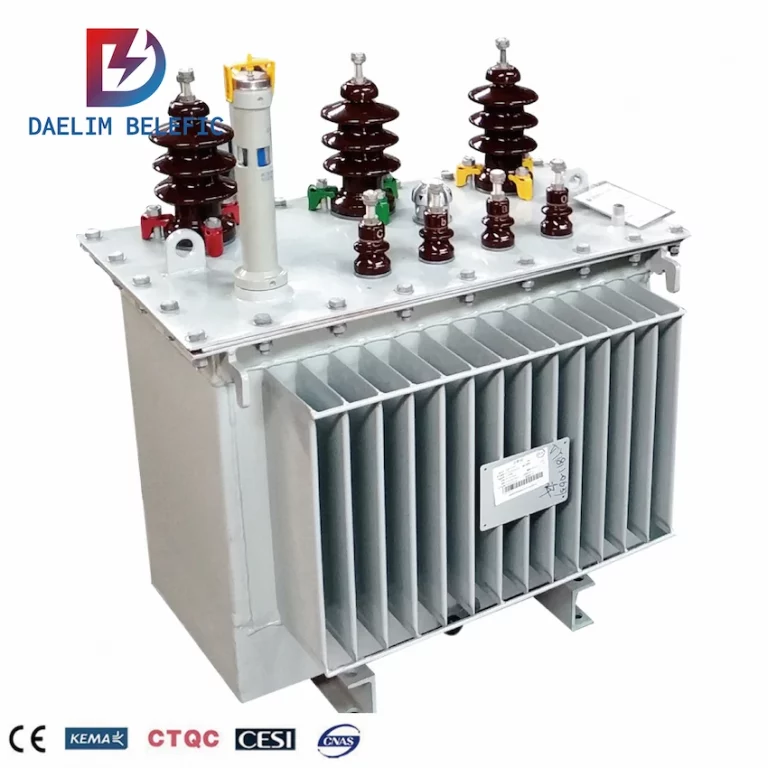
Submersible distribution transformers are designed for long-term use with minimal maintenance requirements. However, like any other electrical equipment, they still require regular inspections and maintenance to ensure optimal performance and prevent breakdowns.
One of the most important maintenance tasks for submersible distribution transformers is oil testing. The oil in the transformer is a critical component of its insulation system, and regular oil testing can help detect potential problems such as moisture buildup or the presence of contaminants. If any issues are identified, the oil can be replaced to restore the transformer’s optimal performance.
Other maintenance tasks for submersible distribution transformers include visual inspections of the transformer and its components, testing and inspecting the transformer’s protective devices, and monitoring the transformer’s temperature and load levels. Additionally, any signs of damage or wear should be addressed promptly, and repairs should be made as soon as possible to prevent further damage.
It’s important to note that maintenance requirements may vary depending on the specific model and manufacturer of the submersible distribution transformer. Regular maintenance and inspection are crucial to extending the lifespan of the transformer and ensuring optimal performance. It’s recommended to work with a qualified professional or manufacturer to develop a comprehensive maintenance plan based on the transformer’s specific needs.
Submersible distribution transformers are commonly used in various applications where a reliable and safe power supply is required in a compact and easily installable form factor. Here are some common uses of submersible distribution transformers:
Underground Power Distribution: Submersible distribution transformers are often used in underground power distribution systems, where they are installed in transformer vaults or buried directly in the ground. They can operate in damp or wet conditions, making them ideal for this type of application.
Urban and Suburban Areas: Submersible distribution transformers are also used in urban and suburban areas where overhead power lines may not be practical or are prohibited by zoning regulations. In these areas, the transformers are often installed on the ground, in a pad-mounted configuration.
Rural Areas: Submersible distribution transformers are also used in rural areas where there are long distances between power stations and customers. These transformers can be installed on poles or in pad-mounted configurations, depending on the application.
Industrial and Commercial Applications: Submersible distribution transformers are used in industrial and commercial applications where a reliable power supply is critical for manufacturing processes, data centers, hospitals, and other facilities. They are also used in lighting and other systems that require a steady power supply.
Renewable Energy Systems: Submersible distribution transformers are used in renewable energy systems such as wind and solar power generation. These transformers step up or down the voltage of the power generated by the system to match the voltage of the local power grid.
Overall, submersible distribution transformers are versatile and can be used in a wide range of applications where reliable, safe and efficient power supply is needed.
mini substation transformer, everything you need to know
WProper installation of submersible distribution transformers is crucial for ensuring their optimal performance and longevity. Here are some best practices for installing submersible distribution transformers:
Follow the manufacturer’s instructions: The installation process may vary depending on the type and size of the transformer. It is important to follow the manufacturer’s instructions and guidelines to ensure proper installation.
Select the right location: The location where the submersible distribution transformer is installed should be free from potential hazards and should be easily accessible for maintenance and repair work. The location should also be suitable for the transformer’s ventilation and drainage needs.
Prepare the installation site: The installation site should be level and free from debris. It should be excavated to the proper depth, and a suitable foundation should be constructed to support the transformer’s weight.
Use proper equipment and tools: When installing the transformer, use equipment and tools that are recommended by the manufacturer. This may include cranes, lifting devices, and specialized tools for tightening bolts and connectors.
Inspect the transformer before installation: Before installing the transformer, inspect it for any damage or defects. Any issues should be addressed before installation.
Connect the transformer correctly: Ensure that all connections are made properly, following the manufacturer’s instructions. This includes connecting the primary and secondary cables, grounding, and bonding.
Test the transformer: Once the installation is complete, perform tests to ensure the transformer is operating correctly. This may include tests for voltage, insulation resistance, and oil quality.
By following these best practices, you can ensure that your submersible distribution transformer is installed correctly and will operate safely and efficiently for many years.
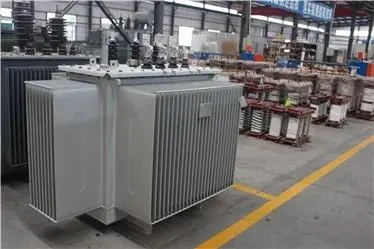
Finding a reliable submersible distribution transformer manufacturer is critical to ensuring that you have high-quality and dependable transformers that meet your electrical needs. Here are a few tips on where to look for a reputable manufacturer:
Research online: You can use search engines to find submersible distribution transformer manufacturers. Visit the websites of the manufacturers and look for details about their experience, certifications, and products. You can also read reviews from previous customers to get an idea of the quality of their products and customer service.
Ask for referrals: You can ask for recommendations from colleagues, friends, or other people in the industry who have used submersible distribution transformers. They may be able to recommend a reliable manufacturer based on their experience.
Attend industry conferences: Attending industry conferences and exhibitions can be an excellent way to meet manufacturers and learn more about their products. You can interact with the manufacturers’ representatives and ask questions about their products.
Check the manufacturer’s certifications: Make sure the manufacturer has the required certifications, such as ISO 9001 quality management certification, to ensure that they meet the international quality standards. Also, check if the manufacturer has the certifications needed for the specific markets where you will be using the transformers.
Look for manufacturers with strong R&D capabilities: A manufacturer with strong research and development capabilities can provide innovative and efficient solutions that meet your needs. Check if the manufacturer invests in R&D and has a team of experts who are knowledgeable in the latest industry standards and regulations.
In summary, finding a reliable submersible distribution transformer manufacturer requires research, referrals, and attending industry events to gather information about the manufacturer’s certifications, products, and experience. Always check the manufacturer’s certifications and research their R&D capabilities to ensure that you are getting high-quality transformers that meet your electrical needs.
In conclusion, submersible distribution transformers are an important component of modern electrical distribution systems. They offer several benefits, including space efficiency, durability, safety, and reliability. If you are in need of a submersible distribution transformer, be sure to choose a reputable and experienced manufacturer like Daelim Belefic to ensure optimal performance and long-term value.
Underground transformers offer several advantages compared to their above-ground counterparts:
Aesthetics: Underground transformers are out of sight and blend in well with the surrounding environment. They can be a great option for areas with strict zoning laws or aesthetic considerations.
Safety: Underground transformers are less exposed to external factors such as wind, rain, and other weather-related hazards. This makes them less prone to damage or malfunction, which in turn makes them safer for the public and for utility workers.
Space-saving: Underground transformers are installed beneath the ground, which frees up valuable above-ground space that can be used for other purposes such as parking lots, parks, or other types of development.
Noise reduction: Underground transformers produce less noise compared to above-ground transformers, which can be an important consideration for areas where noise pollution is a concern, such as residential areas or near hospitals.
Reliability: Underground transformers are typically designed to withstand extreme weather conditions and can be more reliable than above-ground transformers, which are more susceptible to weather-related damage.
Overall, underground transformers offer a range of benefits, including improved aesthetics, safety, space-saving, noise reduction, and reliability, making them an attractive option for utility companies and developers.
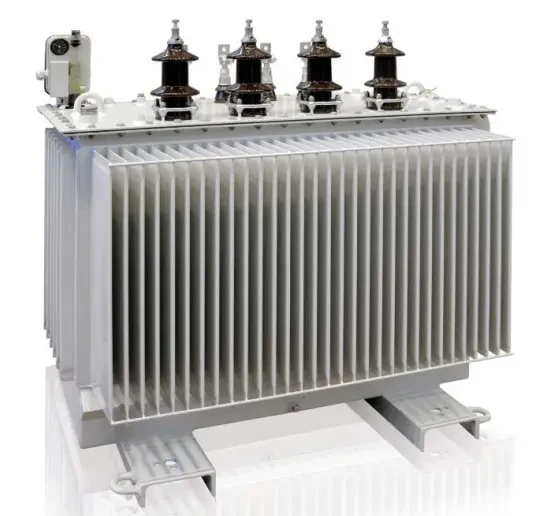
Substation transformer manufacturers are companies that specialize in the design, manufacturing, and testing of transformers used in electrical substations.
These manufacturers produce various types of transformers, including power transformers, distribution transformers, and substation transformers. Substation transformers are specifically designed to be used in electrical substations, which are key elements in the power grid that facilitate the distribution and transmission of electrical power from generating stations to consumers.
Substation transformer manufacturers use advanced technologies and materials to ensure that their products meet the highest industry standards for reliability, durability, and efficiency.
They also offer a range of services, including installation, testing, and maintenance, to ensure that their transformers perform optimally throughout their operational lifespan.

Pad-mounted transformers are an essential component of the electrical grid, and they are typically used to distribute power to various locations, such as residential areas, commercial zones, and industrial parks. The pad-mounted transformer is mounted on a concrete pad, and it is usually enclosed in a metal cabinet for protection from the elements. The following are some of the common parts of a pad-mounted transformer:
Transformer Tank: The transformer tank is the main component of the transformer that holds the transformer oil and the transformer core. The transformer tank is typically made of steel or aluminum, and it is designed to withstand extreme temperatures and pressures.
Bushings: Bushings are the electrical insulators that are used to connect the transformer to the power lines. They are typically made of porcelain or polymer, and they provide a safe and secure way to transfer electrical energy from the power lines to the transformer.
Cooling System: The cooling system is used to dissipate the heat that is generated by the transformer. There are two main types of cooling systems: air-cooled and oil-cooled. In
If you need to order pad mounted transformer parts, you can contact the manufacturer or supplier of the transformer. They should be able to provide you with a list of available parts and their prices. You will need to provide the make and model number of your transformer, as well as the part numbers you require.
Another option is to search for online retailers that sell transformer parts. Many of these retailers specialize in transformer parts and can provide a wide range of options. When ordering online, make sure to check the specifications of the parts carefully and ensure that they are compatible with your transformer.
It is also a good idea to compare prices from different suppliers before making a purchase to ensure that you are getting the best deal. Finally, make sure to check the warranty and return policies of the supplier to ensure that you have recourse in case the parts are defective or do not meet your expectations.
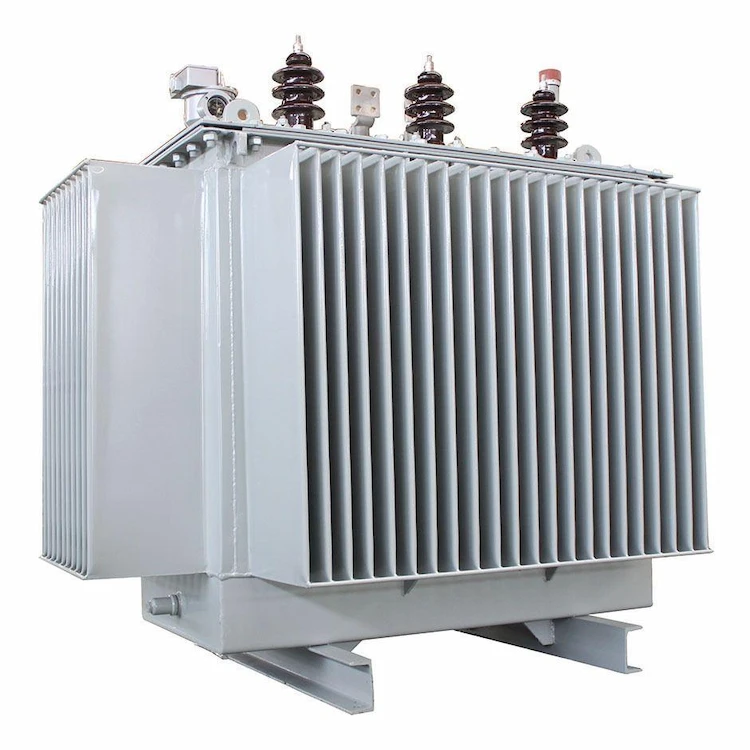
Grounding transformers are specialized transformers used in power systems to provide a neutral point for grounding purposes. Grounding transformer manufacturers are companies that design, produce, and distribute these types of transformers to power utilities, industrial facilities, and other end-users. These transformers are typically used to improve safety and protect electrical equipment by reducing or eliminating the risks of electrical shocks, surges, and other types of faults.
Grounding transformer manufacturers may offer a variety of transformer designs, sizes, and specifications to meet different customer requirements. Some manufacturers may specialize in specific types of grounding transformers, such as zigzag grounding transformers or grounding transformers with built-in protective devices. When choosing a grounding transformer manufacturer, it’s important to consider factors such as the manufacturer’s experience, reputation, certifications, customer support, and the quality of their products.
When selecting a grounding transformer manufacturer, there are several factors to consider, including:
Quality: Choose a manufacturer with a reputation for producing high-quality grounding transformers. Look for certifications, such as ISO 9001, which indicate that the manufacturer has quality management systems in place.
Experience: Consider the manufacturer’s experience in the industry. Look for a manufacturer with a proven track record of producing reliable grounding transformers and providing excellent customer service.
Customization: Determine whether the manufacturer can customize grounding transformers to meet your specific needs. This can be especially important if you have unique requirements or specifications.
Cost: Consider the cost of the grounding transformer and compare it to similar products from other manufacturers. Keep in mind that the lowest price may not always be the best value.
Customer service: Look for a manufacturer that provides excellent customer service and support. This can include technical assistance, warranty information, and post-sales support.
By considering these factors, you can choose a grounding transformer manufacturer that meets your specific needs and provides reliable, high-quality products.
A pole mount transformer is a type of transformer that is mounted on a pole instead of being installed on the ground like a pad-mounted transformer. Pole mount transformers are typically used for low voltage distribution, and they are commonly found in residential and rural areas.
These transformers are designed to be compact and lightweight, and they are often installed on wooden or steel poles. They are also designed to be easily accessible for maintenance and repair purposes.
Pole mount transformers are commonly used in areas where it is difficult to install a pad-mounted transformer or where space is limited. They are also used in areas where underground installations are not possible due to the presence of bedrock or other geological features.
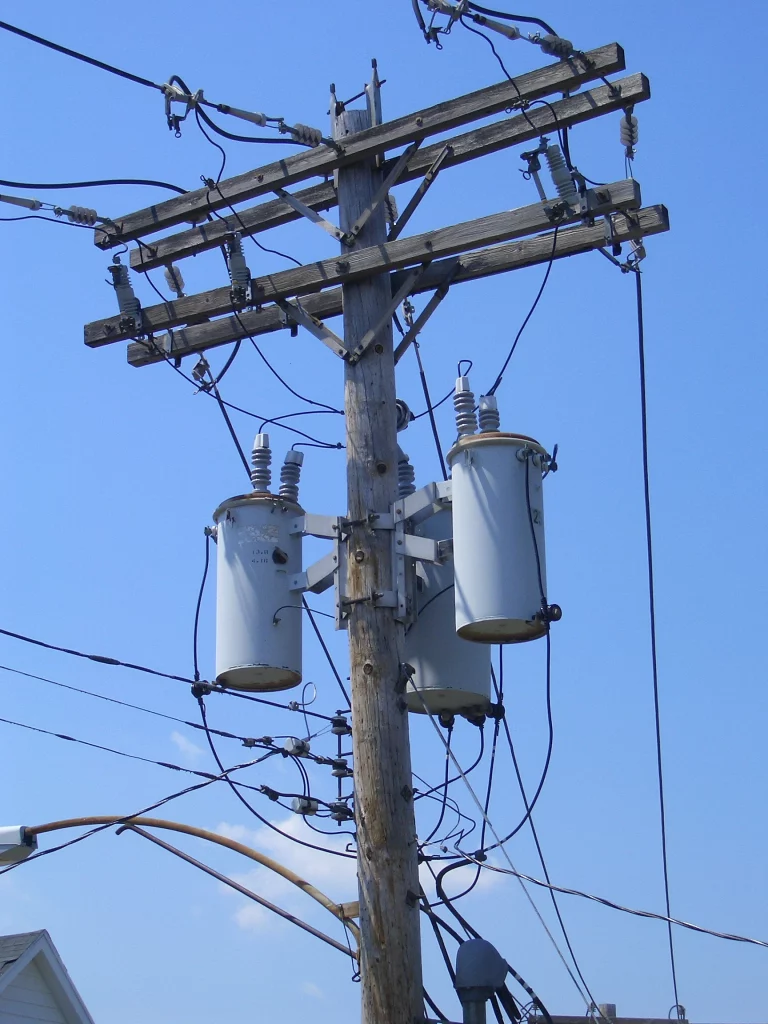
A pole mount transformer is a type of transformer that is mounted on a utility pole instead of being placed on the ground or in an underground vault. Here are some of the benefits of using a pole mount transformer:
Space-saving: Pole mount transformers are ideal for areas where space is limited as they take up very little ground space.
Easy to install: The installation of pole mount transformers is relatively easy and quick, as it does not require the extensive digging and construction work that underground transformers need.
Maintenance: Maintenance of pole mount transformers is easier and more accessible than underground transformers, as they are easily reachable and do not require excavation work.
Cost-effective: Pole mount transformers are generally more cost-effective than underground transformers, as they require less infrastructure and construction work.
Accessibility: Pole mount transformers are easily accessible to utility workers, which makes repairs and maintenance more efficient and quicker.
Reliable power supply: Pole mount transformers can provide a reliable power supply to both urban and rural areas, making them ideal for use in both settings.
Overall, pole mount transformers are a cost-effective and practical solution for providing a reliable power supply to areas where space is limited, and underground transformers are not feasible.
There are several ways to find transformer manufacturers in Texas:
Online search: You can use search engines like Google to find transformer manufacturers in Texas. You can use keywords such as “transformer manufacturers in Texas,” “Texas transformer companies,” or “Texas transformer manufacturers.”
Industry directories: You can use industry directories like ThomasNet, Manta, and Kompass to find transformer manufacturers in Texas. These directories provide a list of manufacturers along with their contact details and product offerings.
Trade shows: Attending trade shows related to the transformer industry can be a great way to find transformer manufacturers in Texas. These events provide an opportunity to meet with manufacturers, see their products, and learn about their capabilities.
Referrals: You can ask for referrals from other businesses in the transformer industry or from colleagues who have worked with transformer manufacturers in Texas.
When looking for transformer manufacturers in Texas, it’s important to consider factors such as the manufacturer’s experience, reputation, product quality, customer service, and pricing. You should also compare the offerings of multiple manufacturers to find the one that best meets your specific needs.
Submersible distribution transformers can be installed in underground power distribution systems that commonly come with risks of flooding.
Able to operate in highly aggressive environments, these transformers are as durable as they come.
They can also be installed near the shoreline.
DAELIM is the world’s leading producer of Submersible Distribution Transformer. Since its inception, the company has been a pioneer in transformer technology and continues developing various products in Korea and worldwide.
When you need to find more than just existing transformers, Daelim’s Transformer Service Center can help you design and produce distribution transformers that meet your unique needs.
We have our own factory and a professional team of engineers, which can design and modify application requirements that meet all your conditions.
Download Resource
After filling in the contact information, you can download the PDF.